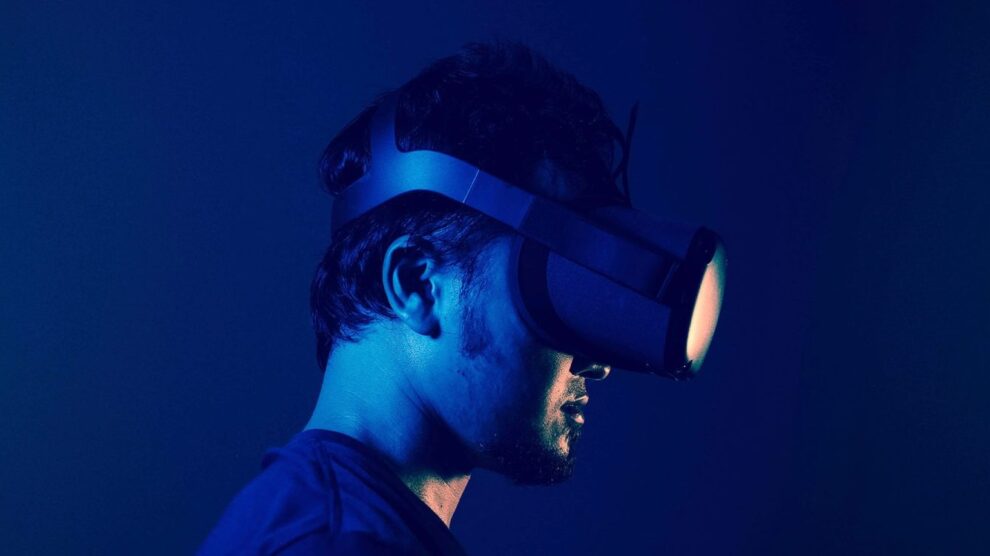Qualcomm has thrown down the gauntlet in the mixed reality (MR) space with its new chip, the Snapdragon XR2 Gen 2, which will enable companies to create their own headsets to compete with Apple’s premium Vision Pro.
This is a significant development, as the chip’s features could lead to a wider range of more affordable and advanced MR devices hitting the market in 2023 and beyond.
What Makes the Snapdragon XR2 Gen 2 Special?
The Snapdragon XR2 Gen 2 chip represents a major upgrade over its predecessor in several key areas:
- Higher processing power and efficiency enabling more complex MR experiences
- Support for displays with higher resolutions and refresh rates
- Integrated 5G connectivity for streaming VR content from the cloud
- Enhanced inside-out tracking for precise interactions in MR environments
- Built-in eye tracking hardware allowing foveated rendering and user intention detection
These capabilities open up many possibilities that simply aren’t available on most existing MR headsets like the Vision Pro. And Qualcomm isn’t keeping the chip to itself.
Spurring a New Wave of MR Headsets
By making the Snapdragon XR2 Gen 2 available to other companies, Qualcomm is spurring competition and innovation in the nascent MR space. Any company can now build advanced MR devices without requiring enormous in-house resources.
This should lead to MR/VR headsets coming to market faster, with better features, at lower price points to appeal to mainstream consumers. Based on the smartphone market evolution, greater competition results in rapid innovation and declining costs over time.
And many promising headsets based on the new chip are already on the horizon for 2023 and 2024…
Thinner, Lighter, More Wearable Devices
One major limitation of current high-capability MR headsets is their bulkiness from requiring separate computing packs. The Vision Pro is saddled with this problem, which worsens ergonomics and comfort.
But the Snapdragon XR2 Gen 2 enables self-contained MR headsets without needing a separate computer or battery. This allows for much lighter and wearable form factors where the entire device is built into the headset.
Companies like Meta, Microsoft, HTC and more are now developing such headsets to provide comfortable, immersive experiences for hours of exploration in virtual worlds.
Advanced Eye Tracking and Other Sensor Capabilities
The integrated eye tracking module in the Snapdragon XR2 Gen 2 also provides opportunities to greatly enhance MR experiences.
For example, foveated rendering uses eye tracking to selectively enhance graphics quality only where you’re directly looking. This allows lifelike visuals rendered in real-time on mobile hardware.
Eye tracking also enables UI navigation and interactions based solely on where you’re looking. This helps minimize controller use and disruptive external sensors.
Additionally, integrated hand tracking, room scanning depth sensors, spatial audio and more allow for highly natural methods of interacting and exploring MR environments.
Democratizing Immersive Experiences
While the Vision Pro pushes technical boundaries, its price tag bars many people from accessing those capabilities. This pattern occurred early on with PCs, smartphones, and other tech products.
But Qualcomm’s move mirrors what happened with ARM processors for smartphones. Licensing the core technology led to massive innovation from many companies, ultimately driving down costs and democratizing access.
The same trend is poised to happen with MR headsets built using the Snapdragon XR2 Gen 2 platform. Within a few years, remarkable MR capabilities once restricted to $2000 enterprise devices may be available on $500 consumer headsets.
This could be the tipping point where immersive MR goes fully mainstream instead of being a niche curiosity. Especially as supporting infrastructure like 5G networks and VR content libraries expand in parallel to improve realism, accessibility and shared connectivity further.
The Future of Consumer MR Experiences
While MR headsets today remain somewhat primitive on the capability-cost spectrum, rapid innovation fueled by Qualcomm’s chip could soon realize extravagant visions.
Imagine MR scenarios in the next 5-10 years where affordable, sleek sunglass-style headsets overlay social metaverses on the real world from everywhere with lightning speed. Or walk into hyperrealistic virtual worlds indistinguishable from physical environments. Perhaps even neurocontrol emerged where thoughts and feelings directly translate into virtual embodiment actions.
The foundations and trajectory toward such visions where our digital lives merge seamlessly with physical reality are being set today. The innovations spurred by the Snapdragon XR2 Gen 2 represent early but enormously promising steps toward the next great computing platform. One that will give shape to how humanity interacts with information itself. An exciting future indeed!
Are you excited about Qualcomm’s new chip possibly democratizing cutting-edge mixed reality experiences sooner than expected? What potential do you see for MR/AR/VR technologies to impact life and society in the years ahead? Share your thoughts below!










Add Comment